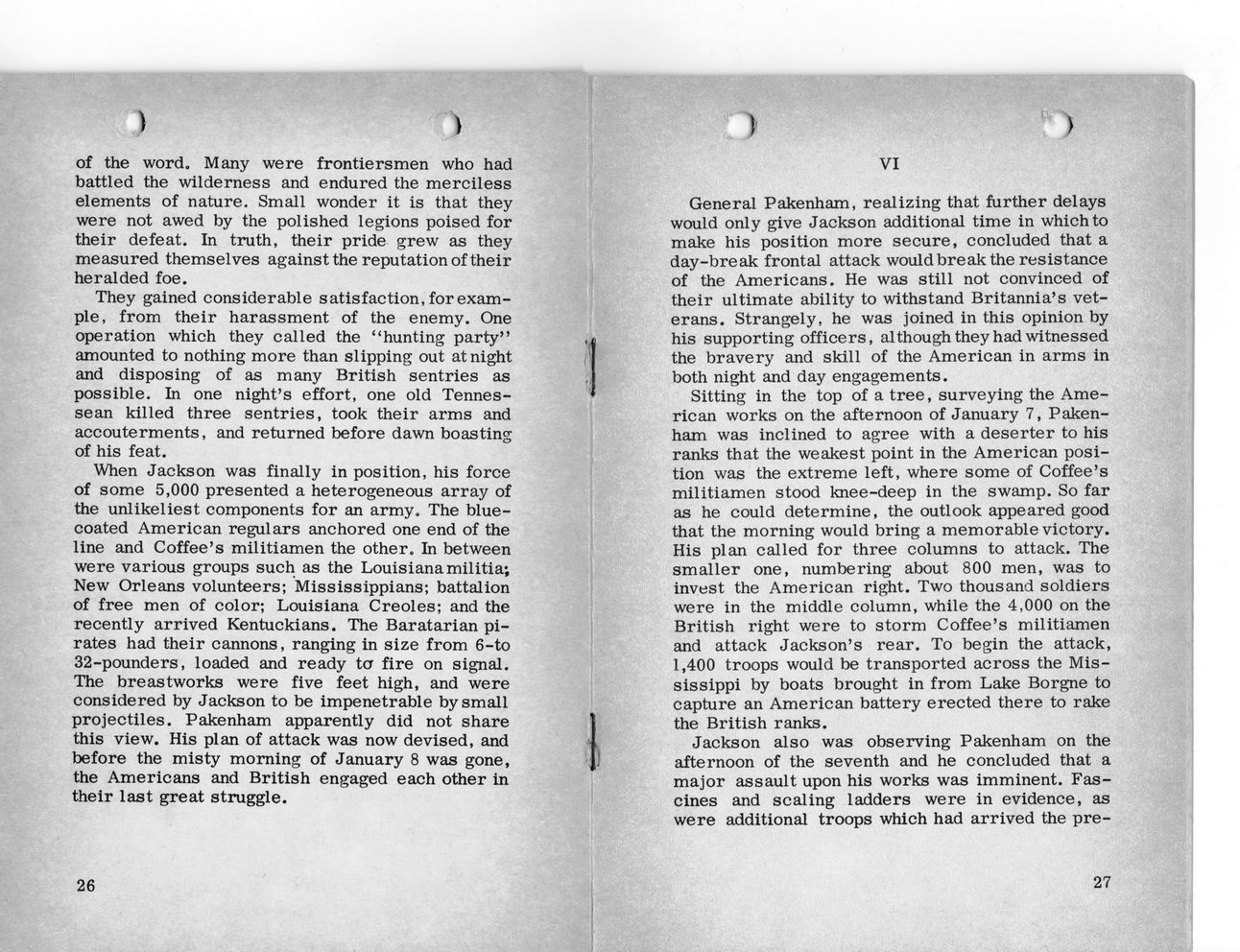This text was obtained via automated optical character recognition.
It has not been edited and may therefore contain several errors.
) ) of the word. Many were frontiersmen who had battled the wilderness and endured the merciless elements of nature. Small wonder it is that they were not awed by the polished legions poised for their defeat. In truth, their pride grew as they measured themselves against the reputation of their heralded foe. They gained considerable satisfaction, for example, from their harassment of the enemy. One operation which they called the ?hunting party? amounted to nothing more than slipping out at night and disposing of as many British sentries as possible. In one night?s effort, one old Tennessean killed three sentries, took their arms and accouterments, and returned before dawn boasting of his feat. When Jackson was finally in position, his force of some 5,000 presented a heterogeneous array of the unlikeliest components for an army. The blue-coated American regulars anchored one end of the line and Coffee?s militiamen the other. In between were various groups such as the Louisiana militia; New Orleans volunteers; Mississippians; battalion of free men of color; Louisiana Creoles; and the recently arrived Kentuckians. The Baratarian pirates had their cannons, ranging in size from 6-to 32-pounders, loaded and ready ta fire on signal. The breastworks were five feet high, and were considered by Jackson to be impenetrable by small projectiles. Pakenham apparently did not share this view. His plan of attack was now devised, and before the misty morning of January 8 was gone, the Americans and British engaged each other in their last great struggle. 26 VI ) General Pakenham, realizing that further delays would only give Jackson additional time in which to make his position more secure, concluded that a day-break frontal attack would break the resistance of the Americans. He was still not convinced of their ultimate ability to withstand Britannia?s veterans. Strangely, he was joined in this opinion by his supporting officers, although they had witnessed the bravery and skill of the American in arms in both night and day engagements. Sitting in the top of a tree, surveying the American works on the afternoon of January 7, Pakenham was inclined to agree with a deserter to his ranks that the weakest point in the American position was the extreme left, where some of Coffee?s militiamen stood knee-deep in the swamp. So far as he could determine, the outlook appeared good that the morning would bring a memorable victory. His plan called for three columns to attack. The smaller one, numbering about 800 men, was to invest the American right. Two thousand soldiers were in the middle column, while the 4,000 on the British right were to storm Coffee?s militiamen and attack Jackson?s rear. To begin the attack, 1,400 troops would be transported across the Mississippi by boats brought in from Lake Borgne to capture an American battery erected there to rake the British ranks. Jackson also was observing Pakenham on the afternoon of the seventh and he concluded that a major assault upon his works was imminent. Fascines and scaling ladders were in evidence, as were additional troops which had arrived the pre- 27

Battle of 1814 27